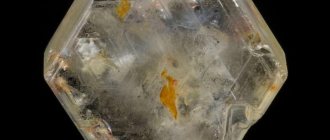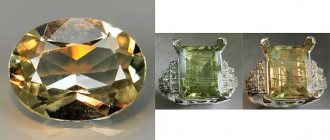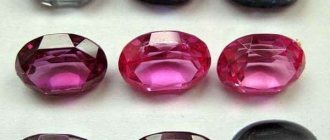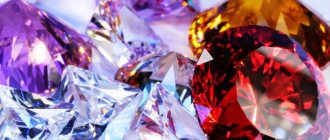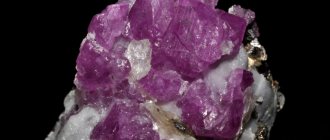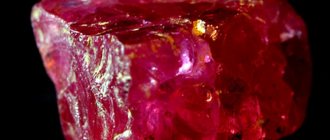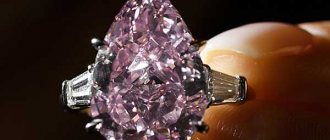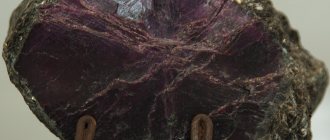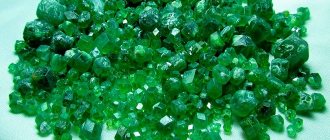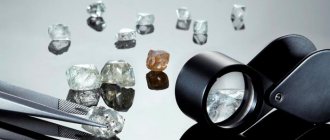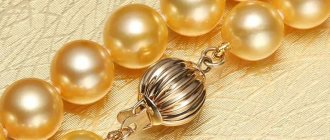| Stone type | Precious, semi-precious |
| Prevalence (Deposits) | India, Kazakhstan, Canada, Russia, USA, Thailand |
| Varieties | Leucosapphire, Padparadscha, Ruby, Sapphire, Chlorosapphire |
| Transparency | Transparent |
| Shine | Glass |
| Mohs hardness scale | 9 |
| Chemical composition | Al2O3 |
| Color | Colorless, yellow, green, red, orange, purple, pink, blue, lilac |
| Owner's color type | Not found |
| Owner's temperament | Melancholic, phlegmatic, choleric |
| Names | Not found |
| Zodiac sign | Aquarius, Cancer, Pisces |
| Date of Birth | from January 21 to February 18 from June 22 to July 22 from February 19 to March 20 |
| Chinese horoscope | Not found |
| Element | Water, Air |
| Planet | Not found |
| Day of the week | Not found |
| Month | Not found |
| Season | Not found |
| Numerology vibration | Not found |
| Chakra | Ajna, Anahata, Vishuddha, Manipura, Muladhara, Svadhisthana |
| What stones is it compatible with? | Alexandrite, Amethyst, Ruby, Sapphire |
| What stones is it not compatible with? | Not found |
| Therapeutic effect (problems) | Vision, nervous disorders, stress |
| Therapeutic effect (on organs) | Skin, gastrointestinal tract, cardiovascular system |
| Magic properties | Spiritual development, negative energy, self-confidence |
Precious stones have been used since ancient times. Rubies and sapphires could be found on the robes of the Egyptian pharaohs and on the ceremonial utensils of the Jewish high priests. These precious stones were incredibly expensive, so not everyone could afford them. At the end of the 19th century, their artificial analogues appeared. Ruby corundum, unlike ruby, was cheaper, but at the same time had the same quality characteristics.
What is ruby and sapphire corundum
Ruby and sapphire are nothing more than varieties of corundum, a hypogene group mineral. Therefore, both of these species have similar physical properties and chemical composition. The main difference is the impurities that are responsible for the color of the gemstones. For ruby it is chromium, and for sapphire it is titanium. Both minerals belong to category I precious stones, which guarantees their high price.
Sapphire and ruby corundum are synthetic stones obtained in a laboratory. This is a kind of budget alternative, with a wide range of applications: from jewelry to rocket science.
Synthetic corundum
Technologies for growing synthetic corundum were developed back in the 19th century. USSR products could boast of excellent quality stones made using well-developed technology. Artificial corundums replaced not only rubies and sapphires in jewelry, but also garnets, diamonds and alexandrites. It is believed that the highest quality was ruby, which at one time was very popular, and almost every woman had such jewelry.
Today, synthetic rubies are also mainly produced; sapphires are not as popular due to the invention of the 20th century - cubic zirconium crystals, or cubic zirconia. Thanks to various chemical additives, they began to be obtained in a variety of colors and, in addition, this is done using inexpensive technologies. And rubies are rarely produced.
Gold ring with ruby
Nowadays, technologies are being developed that make it possible to refine low-quality corundum, of which there is quite a lot. Exposure to high temperatures can remove inclusions from a ruby or sapphire and also change its color.
Some of the refining methods are considered acceptable and, although they reduce the cost of the stone, they still have some value. Others actually make a fake, but it does not stand the test of time. We are talking about diffuse coloring. When heated, a metal is placed next to the stone, which subsequently gives them color. It can be chromium, titanium, bromine and others.
Coloring with bromine is allowed, since its molecules penetrate deep into the layers of the stone, and it completely changes color. But it is not very popular as it turns yellowish in color. More expensive corundums - blue and red - are obtained by exposure to titanium and chromium. But the molecules of these substances are large and color only a small layer. As the stone is used, recut or repolished, it may wear away and the mineral will lose color.
Ruby belongs to the category of the most expensive precious stones in the world. The most valuable rubies are mined in Burma. A Burmese ruby can, in some cases, be larger than a similarly sized diamond. But, as with other colored stones, if the ruby is of poor quality and not beautiful in color, the cost can be several dollars per carat. Typically, these categories include stones that are opaque.
How to distinguish from ruby
Natural stone corundum is a gem of natural origin. It is formed at great depths from igneous rocks. It is a mineral obtained by metamorphosing bauxite, an ore based on aluminum oxide.
The same type of ore is used in the synthesis of ruby corundum in the laboratory. The resulting product has the same crystal lattice and basic characteristics as its natural counterpart. It conveys well the shades of red and its neat shine.
The main advantage of synthetic stone is cost. It is much cheaper than natural ruby. Fraudsters often take advantage of the similarity, trying to pass off an artificial gem as a natural one. However, if you wish, you can easily distinguish a fake from the original.
- Synthetic stones change color when exposed to ultraviolet irradiation (ruby corundum begins to glow orange).
- The surface of an artificial crystal is usually covered with straight horizontal shading. In natural stone it is most often zigzag and curvilinear.
- An original can leave a scratch on the glass, a synthetic ruby cannot.
- Price is an important marker that allows you to identify the original. Artificially grown rubies are many times cheaper than natural ones.
What are the differences from sapphire
Sapphire corundum and sapphire are even more difficult to distinguish from each other than ruby and its artificial counterpart. There are several characteristics that will help identify a laboratory product.
- Hardness. Natural mineral is much harder than artificial one. You can easily verify this by simply running a stone across the glass.
- Structure. Synthetic gems are characterized by purity. But inside a natural formation you can often find minor defects: air bubbles, chips, scratches.
- Light refraction. This indicator is measured by a special device called a refractometer. A real sapphire has a value of 1.762-1.778. Any deviation indicates a fake.
- Irradiation. When exposed to UV rays, sapphire corundum turns a dirty green color, indicating the presence of a large percentage of titanium oxide.
- Asterism. “Stellarity” is found only in natural minerals.
Be sure to watch: How and where diamonds are mined
Today, scammers often sell duplex stones - a combined synthetic and natural gem. You can detect them with a magnifying glass. A thin groove will be visible in the structure of the mineral.
History of the stone
Corundum has been known since ancient times. In Ancient Egypt, nobles and priests decorated their clothes with sapphires and rubies. Gemstones were used during religious and occult ceremonies in Ancient Persia, Mesopotamia, India and China.
In Rus', yakhont, as corundums were called, appeared much later. Rubies were called scarlet yachts, and sapphires were called azure. Green chlorosapphires were called “oriental emeralds”, and purple ones were called “amethysts of the East”.
Classification of corundum…CORUND Characteristics of the mineral.
After diamond, corundums are the hardest... Published by Sapphire.Sapphire Thursday, November 8, 2012
Corundum came to European countries from the mines of India. Sapphires and rubies quickly gained popularity and recognition, even among royalty. Many regalia, including the crown of the British Empire, are decorated with these precious minerals.
Pure rubies “the color of pigeon blood” were valued higher than diamonds and were often presented by diplomats of countries as a sign of peaceful and noble intentions.
Interesting! Most of the most famous cut rubies do not boast much weight, as jewelers specially cut them to relatively small sizes. The fact is that the smaller the red stone, the brighter and more saturated it shows its shade.
NATURAL AND ARTIFICIAL SAPPHIRES
The first artificial sapphire was grown back in 1910 and immediately began to be actively used in jewelry.
Even antique items can contain man-made crystals.
Synthetic minerals are similar to natural minerals in size, color and transparency.
Only natural corundum sapphire will be considered a precious stone.
Differences and use of artificial
Natural precious minerals are alive, and each of them has its own face -
- changes in color,
- heterogeneous structure,
- microscopic cracks.
Yellow
The perfect appearance of an artificial gem helps to distinguish corundum grown by nature from a fake:
- has a uniform deep color;
- has a homogeneous structure without defects;
- has a glassy luster.
We recommend: Noble gems DIAMONDS
A full-fledged analogue of a natural sapphire with such differences can only be discovered by a specialist jeweler or appraiser.
Prices for different types of sapphire
The price of sapphire depends on its grade and quality:
| Variety | Price per carat | Characteristics | |
| Uncut | Carvings | from 10-20$ (counted per piece, not per carat) | Due to their low quality, such crystals are considered ornamental and not precious. |
| Sapphire cabochons (including star sapphires) | from 10$ per carat | Not transparent enough for jewelry, but available in large sizes. | |
| Faceted | Small stones (less than 0.5 carats) | from 20$ | They have numerous inclusions and are often treated with beryllium for shine. |
| Green, yellow and orange and clear | from 70$-200$ | They are valued relatively low, but among them there are stones of rare colors and purity. | |
| Blue color and its shades | from 300-500$ | Rich cornflower blue crystals larger than a carat are considered the most expensive jewelry stone. |
Uncut
Physical properties and chemical composition
The basis of both natural and synthetic corundum is aluminum oxide. Foreign impurities are responsible for the color of the stone and its variety. Pure natural corundums are usually colorless. Although they are called white, they are particularly transparent with a glassy sheen.
Titanium oxide gives the mineral a blue tint, classifying it as a type of sapphire. Chrome “gives” the stone its red color and all its variations, thus creating rubies and carbuncles. Iron oxide gives the mineral a golden hue, manganese gives it a pink or purple hue, and the combination of iron, manganese and chromium gives the green chlorosapphires, which are so often confused with emeralds. Vanadium in combination with iron in the gem gives it a brown or amber hue, somewhat reminiscent of rauchtopaz.
The hardness of natural stone is 9 points on the Moss scale. It does not dissolve in acids and melts at temperatures above 2050°C.
Artificial corundums are often subjected to ultraviolet irradiation or heating. This has almost no effect on their chemical composition, but affects the appearance, namely the shade of the stone.
Characteristics of corundum
Corundum is a crystalline mineral that is aluminum oxide. The main part of the composition is aluminum - 53%. Sometimes there are impurities of other metals in small quantities: chromium, iron, titanium and manganese. The crystal lattices themselves are pure, and impurities determine the color of the mineral.
The hardness of the mineral is very high, corundum serves as a standard for a value of 9 on the Mohs scale. Just like diamond, it is highly susceptible to chipping. Has a glassy sheen. A special property of stones that belong to corundum is the effect of asterism of a polished crystal in the presence of rutile inclusions.
Unlike other minerals, it is insoluble in acids, non-magnetic, and high hardness.
Varieties of corundum include:
- Ruby is a red or pink mineral whose color comes from the presence of chromium.
- Sapphire is most often blue, colored with titanium, but this variety can also include other colors of the mineral.
- Leucosapphire is a colorless stone.
- Emery is dark, opaque, fine-grained. It is formed due to the mixing of corundum with another mineral - magnetite, hematite, quartz.
- Oriental topaz is a yellow transparent crystal.
- Oriental amethyst - purple, transparent.
- Oriental emerald is green.
The most common myths regarding ruby and sapphire - the two main corundums:
- Many people do not know that these two stones are varieties of the same mineral and differ only in color.
- Only red corundum is called ruby, but there can be many varieties of sapphires. In general, all corundums, in addition to red minerals, are called sapphire.
- The use of corundum is limited to the jewelry industry. This opinion is one of the most erroneous. Corundum, along with diamond, crushed into powder is used as abrasives. The crumb is applied to wheels intended for a grinder. Corundum is also used to make bearings in moving parts of watches and instruments. Since the late 60s, ruby lasers have been used in medicine, cosmetology, science and even industry. Typically, low quality stones or synthetics are used for these purposes.
- The color of all corundums is uniform. In fact, this is rarely the case. Some stone colors are alternating stripes rather than a solid shade. For example, purple is an alternation of red and blue stripes. Some of the corundums in cabochons can exhibit the properties of asterism, that is, “give” a star.
- Sapphire is only a variety of corundum. This is also not entirely true. Most often, this term is applied specifically to aluminum diamonds, but sometimes other stones can be called sapphires. For example, there is such a name for tourmaline as Brazilian sapphire.
- Corundums are not used to make large-sized jewelry. This is most often the case, the stone is very expensive and tends to crack. In addition, high-quality rubies and sapphires are rare, and even more so in large sizes. Such a stone will not be comfortable to wear and there is a risk of damaging it. However, there are several items made of sapphires whose weight exceeds two thousand carats; they are kept in museums around the world. Large rubies are much less common and are most often used only as inserts in jewelry.
- The fluorescence effect is found only in natural stones. In fact, the fluorescent doublet, which is located in the red color area, occurs in both types of stones and is caused by radiation from the sun or ultraviolet light.
- A carbuncle is the same as a ruby. In ancient times, this name was found when talking about red stones, but most often these were pyropes, varieties of garnet or red spinels. Both of these stones, by the way, were very often confused with ruby.
- The most valuable corundums are dark ones. A gemstone that is classified as colored should not be too dark or light. The most expensive variety of ruby is considered to be the color of pigeon's blood. The presence of shades, especially gray or brown, can reduce the price of a stone.
- Natural corundum will not have inclusions. Most stones created by nature will still have some inclusions in their composition, and this is even one of the parameters by which they are distinguished from synthetic ones. But it is very rare to find a ruby or sapphire of perfect purity. If there is a shade and sufficient weight, the cost of such stones can reach exorbitant values.
How to distinguish natural from fake
Stones of artificial origin cannot always be distinguished from natural ones. If possible, you should use special equipment: a microscope or a magnifying glass. You can even ask a specialist for help - a professional jeweler.
Using a magnifying glass, the structure of the stone is studied. The presence of bubbles and minor defects indicates its natural nature. If the seller allows, you can heat the stone and evaluate the range of changes in its color. Genuine rubies and sapphires do not change shade. In addition, they are harder than synthetic analogues or artificially created duplexes. This can be checked by simply running the gem across the glass.
The presence of certificates confirming the natural origin of the stone is also of great importance. In addition to the basic physical characteristics, the documents must indicate the mineral deposit.
Are you fascinated by ruby corundum jewelry?
VeryNo
Healing properties
Natural stones have long been credited with healing properties. It is believed that corundums can have a beneficial effect on the following systems of the human body:
- cardiovascular;
- digestive;
- urinary;
- circulatory;
- endocrine.
Blue sapphire is good for the eyes, according to traditional healers, as it normalizes intraocular pressure. Yellow varieties improve metabolism and have a rejuvenating effect. Therefore, stones of a golden-sunny hue are often presented as gifts to women.
Be sure to check out: Is it possible to wear and accept pearls as gifts at a wedding?
Magical properties of stones
In terms of their impact on human health and general condition, the stones will differ dramatically in use:
- Corundum is used to improve hematopoiesis, as well as metabolism, and to treat eye diseases. Helps cope with depression and has a beneficial effect on the nervous system. Corundum can give strength, gives a person determination, self-confidence, and courage.
- Ruby can rejuvenate the body and strengthen the mind. This stone is a stimulator of ardent love. It is a symbol of power, might and strength, endowing the owner with wisdom. In ancient times, ruby was used to normalize sleep, increase appetite and gain vigor. It also has hemostatic properties. It is believed that if a cruel, aggressive and evil person receives a ruby, then his cruelty and aggression will only increase. Astrologers recommend that Leo, Sagittarius and Aries get a ruby as a talisman. Thus, representatives of these zodiac signs will gain power, creative development and its implementation.
Magical meaning
Sapphires and rubies have been used in occult rituals since ancient times, so it has always been endowed with magical properties. According to esotericists, corundum is capable of exerting a powerful influence on the course of thoughts and actions of its owner. This is a stone of active and purposeful individuals, people with ambitions and high expectations.
Corundum will help you concentrate on the path to your goal. The stone actively supports the owner, driving away fears and increasing self-confidence. However, at the same time, it requires energy and active action from the owner. The gem is not suitable for lazy and mediocre people.
Blue sapphire is often given to people whose work involves mental activity. It is a stone of scientists and researchers. A real natural ruby can protect against negative energy and support in times of crisis. Earrings with this stone will help you find harmony, both with yourself and with the world around you, and a ring will allow you to reveal your hidden potential.
Where are corundum and ruby used?
Artificial corundum has found its place in the formation of abrasive compounds, highly durable enamels, fire-resistant materials and the like. Corundum, as a mineral, is used in jewelry, for framing earrings, rings, pendants and bracelets. Only when corundum inserts are used in the product, the label will indicate “red ruby”, “blue sapphire” and so on.
Ruby is used to create all types of jewelry and watch movements. A product using this gemstone will be labeled "Ruby".
Who is it suitable for?
Corundum is not suitable for everyone. When choosing jewelry with any type of this mineral, you need to take into account both external data and zodiac affiliation.
By zodiac sign and date of birth
The influence of corundum on its owner is closely related to his zodiac sign.
| Zodiac sign | Type of corundum (color) | Influence |
| Aries | Sapphire blue and yellow | Aries should wear corundum only after 40 years. In this case, they will work as amulets, providing, among other things, a rejuvenating effect |
| Taurus | Blue and cyan sapphire | A Taurus talisman with a stone will protect you from illness, allow you to develop intuition and realize hidden talents. The mineral has a good effect on memory |
| Twins | Dark blue, purple sapphire | Geminis wearing the stone will have improved leadership qualities. Sapphire will not allow the owner to quit halfway |
| Cancer | Any shade of sapphire and ruby | The stone as a talisman will reveal your potential and bestow extraordinary luck. Corundums make Cancers more positive and open |
| a lion | Contraindicated | Wearing a stone can lead to aggravation of relationships with loved ones, conflicts with loved ones |
| Virgo | Green and blue sapphire | Corundum will give a skeptical Virgo positivity and encourage dramatic changes in life. |
| Scales | Purple sapphire, red ruby | The combination of Libra and corundum is the key to success. Representatives of this sign, equipped with a talisman, will experience success in any endeavor |
| Scorpion | Red and pink ruby | For closed Scorpios, the gem will help them make friends and improve relationships. Red ruby ignites passion |
| Sagittarius | Black blue sapphire | The stone teaches sharp Sagittarius delicacy and diplomacy, brings idyll and peace to the house |
| Capricorn | Contraindicated | The gem enhances phobias and negative character traits |
| Aquarius | Transparent corundums | The stone will help this sign find its life path and attract good luck. |
| Fish | White corundums | For altruistic Pisces, the mineral will help replenish energy reserves and ward off melancholy |
If we talk about dates of birth and their connection with the zodiac, then corundum is a talisman for those born on the following days:
- Aries – March 22, 28;
- Taurus – April 26;
- Gemini – May 21, 27;
- Cancer – June 21;
- Leo – July 25, 25;
- Virgo – September 6, 17;
- Libra – October 19;
- Scorpio – October 25, November 8;
- Sagittarius – December 14, November 29;
- Capricorn – January 2, 8;
- Aquarius – January 29, February 6, 17;
- Pisces – February 21, March 7.
Knowing the talisman stones by date of birth, you can choose a successful and useful gift.
By color type
Color type is a person’s natural palette, characterized by the color of hair, skin and eyes. There are 4 main types of appearance in nature, which are correlated with the seasons.
| Color type | Characteristic | Stone |
| Summer | Blonde hair, translucent pink skin, gray, green and blue eyes | Blue sapphire |
| Autumn | Dark brown, brown and red hair, slightly dark skin, brown and green eyes | Chlorosapphires, red rubies |
| Winter | Dark hair, white “porcelain” skin, blue, green and gray eyes | Ceylon dark red rubies, black and blue sapphires |
| Spring | Light blond, wheat-colored hair, brown and green eyes. Peach skin tone | Yellow, pink sapphires, padparadscha rubies |
The table presented will help you choose the most successful option for decorating with a stone.
Features of the stone
There are a large number of varieties of sapphire in nature, and each of them is characterized by a list of certain physical properties:
- Yellow Sapphire: This stone is made from aluminum oxide combined with iron, which gives the gem its yellow color. The color range of the stone ranges from pale yellow to deep yellow.
Such a stone is characterized by the presence of a certain number of internal inclusions, therefore only rare specimens of the gem have impeccable transparency.
In nature, stones weighing no more than eight to ten carats are found. Externally, yellow sapphire is almost impossible to distinguish from chrysoberyl of a similar color. This mineral is mined in Australia and Burma, as well as in Sri Lanka. One carat of such a stone costs from 100-120 US dollars.
- Cornflower blue, or blue sapphire: this stone is considered the most beautiful and valuable among all existing varieties of sapphire. The stone gets its color due to its titanium content. The color of the sapphire mineral varies from subtle blue to deep blue, and the intensity of the color of the stone determines its value.
A cornflower blue sapphire is estimated at $1,000 per carat, and this price can be higher, particularly if the stone cannot be processed. The cheapest blue sapphires will be those that have no distinct color. Blue sapphires are mined today in Sri Lanka, Madagascar and Australia.
- Pink: This stone can have any degree of pink tint. There are also pink corundums with a purple tint. Pink sapphires are less valuable than blue sapphires - their cost does not exceed $200 per 1 carat. Such stones are mined in Burma.
- Padparadscha: Includes pink-orange and purple stones. If the weight of the stone does not exceed five carats, then it is estimated at 130-200 US dollars per 1 carat. Gems larger than five carats increase sharply in price, as they are considered collectible. The stone is mined in Thailand and Madagascar.
- Green: the color of the stone is formed due to the presence of titanium in its composition. The gem is interesting because its color has some heterogeneity. On the mineral you can see yellow and blue veins, combined with a green base. The cost of such sapphires starts from $75 per 1 carat. Mining of the mineral is established in Thailand.
- Colorless: This sapphire is called leucosapphire. The stone may contain inclusions in the form of needles. The mineral is mined in Sri Lanka.
- Star-shaped: it is extremely rare in nature, so the cost of one carat of such a gem will be exorbitant.
It is worth noting that the price of sapphire corundum also depends on the degree of its transparency. The purity of corundum is assessed by viewing the stone through a lens with tenfold magnification.
There are 4 categories of stone purity. The first category is assigned to gems, the inclusions of which are visible only when evaluating the stone with a magnifying glass.
Completely cloudy stones are considered low quality (they are assigned the fourth category), so they are offered at a price of 10-20 dollars, and not for 1 carat, but per piece. Also, the cost of a sapphire depends on its weight, estimated in carats.
The price of corundum in jewelry also depends on the type of cut. All varieties of sapphire have a diamond (round) cut, as well as a fancy cut: “Pear”, “Emerald”, “Marquise”, “Heart”, etc. If the stone is large, then it is processed using the cabochon method.
The largest sapphire in the world: Millennium
There are 2 copies of the most expensive sapphires in the world:
- “Millennium”: the mass of this stone is 61.5 thousand carats. On the stone you can see engraved portraits of one hundred and thirty-four famous artists, for example, Shakespeare, Beethoven, Michelangelo, etc. The stone was engraved by the Italian artist A. Boschi. Nowadays, the most expensive corundum in the world is valued at $185 million. The stone belongs to a consortium of investors headed by D. McKinney.
- "Giant of the East": a stone weighing 486.5 carats was found in Sri Lanka. Its cost 13 years ago was estimated at $1.5 million.
Deposits: where there are formations of natural mineral
The most famous deposits are located in a place called the “Asian quadrangle”. It includes Myanmar, Thailand, Sri Lanka and India.
The purest rubies are mined in Burma. Rare chlorospaphyres and black-blue stones are found in deposits in Australia and Tanzania.
In Russia, mining is carried out in the Urals, Primorye and Krasnoyarsk Territory, and one of the most recently discovered deposits is mines in Kazakhstan. Precious corundum is also mined in the USA, Canada, Norway and Greece.
Interesting! According to geological data, the world's sapphire reserves are 20 times higher than ruby reserves.
History and deposit of stones
Corundum formations are located in igneous rocks and its deposits are found in India, Sri Lanka, Madagascar, Burma, Thailand, Greece, Canada, Norway, the USA and Russia. The purest and most transparent rubies, and therefore the most valuable, are the stones mined in Asia.
The history of rubies says that they were mined back in the Bronze Age in Burma. More than 2 thousand years ago, rubies were revered in India and were used as talismans.
Ruby is often called an unripe sapphire, but in fact, both it and sapphire, as well as amethyst, leucosapphire, and padparadscha are all varieties of corundum.
According to legend, when Pangea (the supposed supercontinent that supposedly united all the continents) broke up, the only mineral deposit was destroyed. Then some of the rubies remained in the bowels of the earth, where, due to pressure, they continued to oxidize with metals and acquire an even greater red tint, and the rest of the minerals dispersed throughout the world along with oceans and rivers, acquiring blue and yellow hues along the way.
Application
In addition to the jewelry industry, corundum derivatives are actively used in a variety of industries. In optics and instrumentation, sapphire glass is used to increase the strength of lenses. In the aircraft industry, windows are equipped with this part.
In mechanical engineering and machine tools, corundum with a high iron content is used as an abrasive material. Artificial sapphires are needed for the production of medical instruments, luxury watches, mobile gadgets and digital equipment.
In construction, corundum is used as a component of the thermal insulation layer.
AREAS OF USE
Sapphire can be seen not only in jewelry.
- Corundum is indispensable in grinding and sharpening work.
- Used for the manufacture of precision lasers and optical instruments.
- It is also used to make record needles.
- The mineral is used in medicine to replace the lens of the eye. With a sapphire lens, a person is able to distinguish more than a hundred shades of gray.
Magic properties
- Corundum sapphire has been a symbol of loyalty, wisdom, determination and honor since ancient times.
- The mineral will calm you down, help you think soberly, achieve your goals, while maintaining purity of thoughts.
- The most powerful magical abilities are attributed to star sapphires. It is believed that King Solomon's seal contained this mineral.
Care
Medicinal properties
Sapphires are very sensitive to the energy emitted by their owners.
- They only work for people with pure intentions. It’s not for nothing that this corundum is called the stone of nuns.
- In the right conditions, minerals will help stabilize blood pressure, cure skin and eye diseases, improve sleep, and relieve back and joint pain.
- Of course, it is preferable to use natural corundum for treatment.
We recommend: AMMOLITE - the rainbow of an ancient mollusk
Suitable for Zodiac signs
Sapphire is universal for all elements.
- This mineral, which cools the head and guides one to the goal, is best suited for signs prone to ardor - ARIES, TAURUS, AQUARIUS, SAGITTARIUS and LION.
- It is advisable for LIONS to choose crystals of green, orange and yellow colors.
Price
The price of a stone depends on a number of its parameters, such as:
- purity;
- weight;
- shade;
- cut.
Category I rubies can cost up to $1,500 per carat. But the cost of the same stones, but category III, will be significantly different and will not exceed $400-500 per unit of weight.
The most expensive rubies are those from Burma. They are sold exclusively at auctions, where the price per carat starts at $3,000.
Sapphires are cheaper, somewhere around $150 per carat. However, the larger the stone, the higher the price per unit weight. Minerals larger than 8-9 carats cost at least 10 thousand dollars on the market.
What is more expensive, ruby or corundum?
In order to answer this question, first of all, it is necessary to understand how ruby differs from corundum:
Corundum is a mineral, while ruby in the narrow sense is a red stone, cut and used for jewelry. Here we can draw an analogy with a diamond and a diamond. A diamond is just a cut diamond, and a ruby is just a cut corundum.
All rubies are corundums, but not all corundums are rubies; they come in many varieties.
What determines the price of a ruby? Like all other precious stones, the value of a ruby is estimated according to the 4C rule:
- Size. Large rubies are very rare because chromium, the substance that gives them their color, also affects the integrity of the stone. Accordingly, the price increases with increasing weight.
- Color. This factor is assessed according to criteria such as the main color, its saturation, and shades.
- Purity. Rubies most often have a large number of different inclusions. Clarity is graded in three categories, depending on whether these inclusions are visible to the naked eye and how widespread they are throughout the stone.
- Cut. As with other stones, the cut of a ruby plays an important role in its evaluation. Round-shaped stones are rated most highly, followed by all the others, in addition to “marquise” and “pear”, such shapes are rated least of all. Star rubies are cabochonized, this is how they reveal their qualities to the fullest. The cutting of rubies depends on the original properties of the stone and how much mineral was lost in the process.
Main conclusions
Ruby corundum is an artificial analogue of natural stone with an identical crystal lattice structure and a similar chemical composition.
- Like ruby, sapphire corundum is a laboratory-grown mineral.
- You can distinguish artificial analogues from the original by visually examining the structure, heating or irradiating the stone.
- The color of corundum is closely related to its composition, namely to the impurities that are contained in small quantities in the ore.
- The areas of application of the stone include both jewelry and industrial sectors.
- If you wish, you can choose a stone based on your zodiac sign and birth period.
Corundum can be an excellent talisman if you choose the right variety and don’t forget to care for it regularly.
Share your opinion about this amazing mineral and stories about your talismans and amulets with precious and semi-precious stones.
Properties
Since ancient times, people have been convinced that ruby corundum has special properties in the field of healing and magic. They believed that the mineral could cure serious diseases of various kinds. “Stone of Life” is the name it bore in the past.
Medicinal
Constantly wearing corundum has quite significant healing properties.
It is able to regulate blood pressure. Helps improve blood flow and stable heart function.
Reduces pain in diseases of the back, including the spine. Reduces joint pain.
Supports normal functioning of the gastrointestinal tract, liver and kidneys.
In addition, it helps with vision problems. It can improve visual acuity if you look at the mineral for about 20-30 minutes every day.
Magical
In ancient times, people believed that the stone tends to darken if some danger approaches the owner.
That is why ruby corundum is a talisman against troubles and misfortunes. It is also the “stone of love.” They say that in order for a mineral to “come to life” and bring benefits, you need to treat it with love and respect. Before putting on jewelry with corundum, it must be carefully ironed.
Ruby corundum helps its owner discover leadership qualities and strengthen the will in making important decisions.
If the stone is surrounded only by negative energy, it can strengthen and give free rein to all the negative qualities of a person.
Ruby corundum is a very powerful talisman and amulet. Its healing and magical properties appear only if the stone is genuine. Otherwise, it will not bring any benefit.
